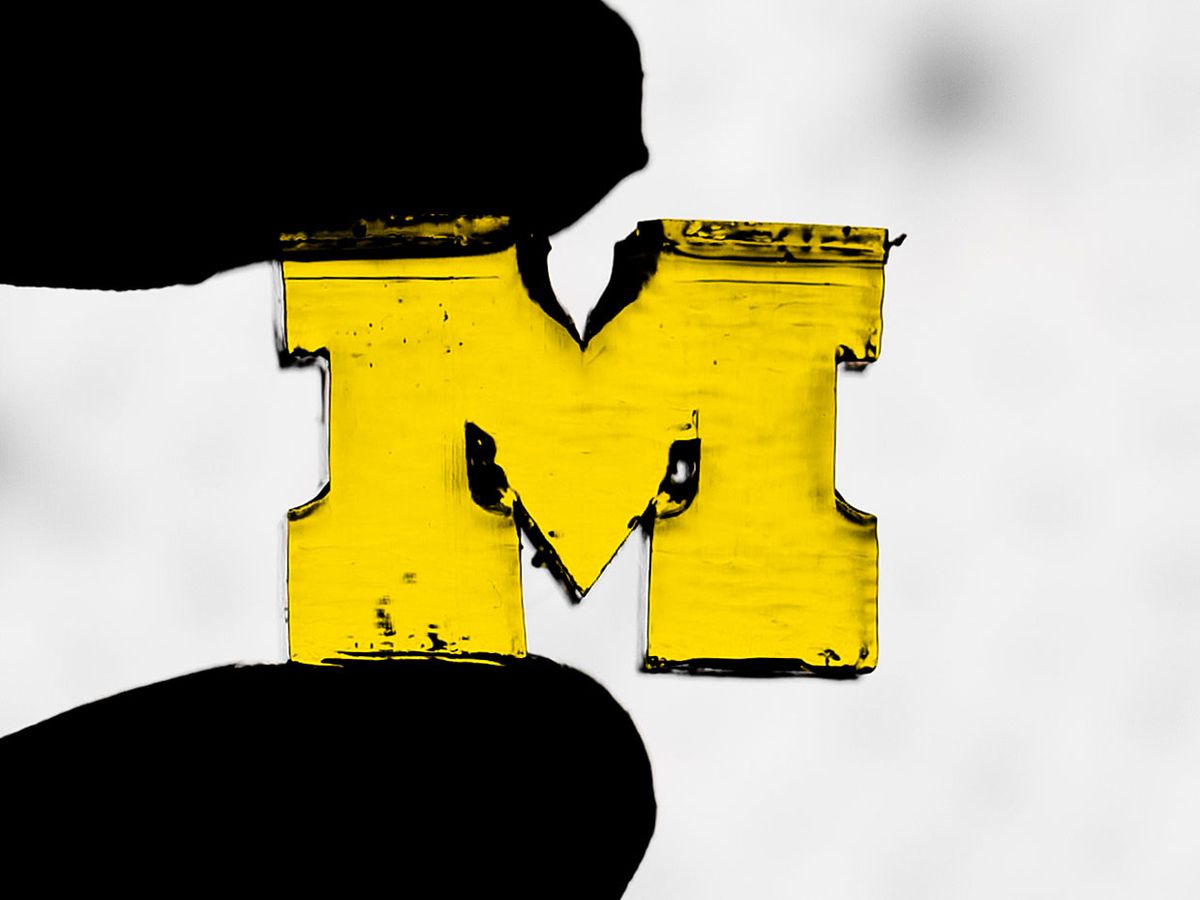A new 3D-printing technique could render a three-dimensional object in minutes instead of hours—at up to 100 times current speeds. The experimental approach uses a vat of resin and some clever tricks with UV and blue LED lights (no lasers needed) to accelerate the printing process.
The technique looks almost like a time-reverse film loop of an object dissolving in a reservoir of acid. But instead of acid, this reservoir contains a specially-designed resin that hardens when exposed to a particular shade of blue light. Crucially, that hardening (the technical term is polymerization) does not take place in the presence of a certain wavelength of UV light.
The resin is also particularly absorbent at the wavelengths of both the blue and UV light. So the intensity of UV or blue light going in translates directly to the depth to which light will penetrate into the resin bath. The brighter the light beam, the further it penetrates and the further its effects (whether inhibiting polymerization in the case of UV light, or causing it in the case of blue light) will be felt in the bath along that particular light path.
Timothy Scott, associate professor of chemical engineering at the University of Michigan, says the way to get a 3D-printed object out of this process is to send UV light through a glass-bottomed basin of resin. Then, at the same time, through that same glass window, send patterns of bright and dim blue light.
If this printing process used only the blue light, it would immediately harden the first bit of resin it encounters in the basin—the stuff just inside the glass. And so each successive layer of the object to be printed would need to be scraped or pulled off the window’s surface—a time-consuming and potentially destructive process.

“We use the [UV] wavelength to prevent the resin from polymerizing against the projection window,” Scott says. “But we can change the intensity of the inhibiting wavelength, that in turn can thicken up…the region that doesn’t polymerize. We can go to hundreds of microns comfortably, approaching or even exceeding a millimeter, so that’s getting quite thick. We can do that across not only the entire region of our bath, but we can do it selectively. By, again, patterning the intensity that we’re projecting into the vat.”
Which is why the UV light, perhaps the key innovation of the new research, potentially streamlines the entire light-resin 3D-printing process, also called 3D stereolithography.
To be clear, other 3D-stereolithography printing processes and even startup companies are out there in the world. What’s new with the Michigan group’s research (published in Science Advances earlier this month) is the UV light inhibitor that not only prevents the hardened resin from sticking to the window but also can be used in concert with the blue light to sculpt 3D surfaces and contours of hardened resin in the bath.
In a sense, Scott says, the new stereolithography process is really one of the very first truly 3D printing processes—in that it prints not just a series of single 2D layers but rather entire 3D wedges of material in one pass.
“That is straight-up unique, the ability to pattern a volume,” Scott says. “Patterning in 2D is easy, patterning in 3D is nontrivial.”
Another advantage of the process, which Scott says his group is now trying to patent, is the relatively low-tech (and inexpensive) equipment needed to make one of these 3D-stereolithographic printers. Both the UV and blue light can come from off-the-shelf LEDs. In fact, Scott says, the guts of a PowerPoint projector work in a pinch—for the blue light source, at least.
You would, of course, still need the resin—a proprietary concoction developed by Scott and his collaborators. And you’d need a tray with a glass bottom to hold the resin. Last, you would need a stage to draw the 3D-printed object out of its resin bath. The current printer at the group's Ann Arbor lab just uses a simple piece of wood for its stage.
Scott says his group has been able to produce 2 meters of 3D-printed material per hour, contrasted to a typical 3D print speed for stereolithography in the range of 25 millimeters per hour.
The process is fast in relative terms, but it’s not going to supplant mass production injection molding or other high-speed conventional manufacturing technologies. However, it could show promise for one-off custom-printed objects like, for instance, dental or medical appliances that must be fit to a person’s teeth or body.
The commercial partners and production processes that Scott’s group is considering are under wraps for the moment. But Scott says that he’d like for some of his group's customers to have printed products in their hands by the end of this year or the beginning of next.
“Our two differentiators are the materials we can use and speed,” he says. Plastic resins aren’t the only materials they can work with, either. Ceramic particles can also be added to the resin such that when the resin hardens, it can be baked off in an oven to leave only the ceramic behind—molded to the same shape as the resin from which it came.
Margo Anderson is the news manager at IEEE Spectrum. She has a bachelor’s degree in physics and a master’s degree in astrophysics.



